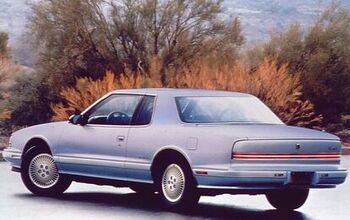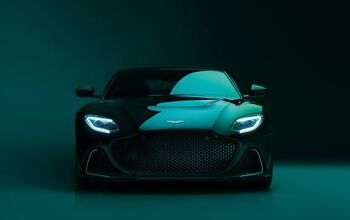Ask The Best And Brightest: Whatever Happened To Visibility?
Steve Edgett writes in:
Sajeev raised an excellent point in today’s piece on the 1974 Ford pickup regarding visibility. Like a few of the regular TTAC readers, I was driving when low belt lines and great visibility were considered cool, as well as functional. As much as I love my four year old BMW 3-series, I find the visibility out the rear to be atrocious. And, compared to a mid-80’s 3-series or a 2002, it is downright dangerous. How much of this bloat and reduced glass area is due to ”safety standards” and how much is fashion?
Because TTAC’s readers include both consumers of automobiles and the workers who design and build our four-wheeled friends, this seems like the perfect topic to settle in one of our friendly community discussions. After all, the most interesting questions about modern automobiles tend to come down to the chicken-and-egg relationship between the manufacturer’s ability to cultivate needs and sell the solution to them, and “true” consumer demand (as witnessed by the fact that neither side of this divide sees itself in as being “in the driver’s seat”). Certainly the Camaro pictured above points to the stylistic benefits of a tiny greenhouse: surely a Zeta-platform vehicle doesn’t need to have so little glass to meet crash test standards. At the same time, it’s likely not a coincidence that dramatic improvements in safety have been accompanied by a tightening of greenhouses.
So, to the designers and engineers in the house we ask: how important is reducing the amount of glass in a vehicle improve safety test performance? To what extent does this issue drive design? And to the consumers we ask: are you really asking for ever-tightening greenhouses in the name of fashion? Can you identify a point at which introducing more glass to a design makes a car look dorky but creating a tighter greenhouse hurts usability (and possibly even active safety)?
More by Edward Niedermeyer
Latest Car Reviews
Read moreLatest Product Reviews
Read moreRecent Comments
- Brendan Duddy soon we'll see lawyers advertising big payout$ after getting injured by a 'rogue' vehicle
- Zerofoo @VoGhost - The earth is in a 12,000 year long warming cycle. Before that most of North America was covered by a glacier 2 miles thick in some places. Where did that glacier go? Industrial CO2 emissions didn't cause the melt. Climate change frauds have done a masterful job correlating .04% of our atmosphere with a 12,000 year warming trend and then blaming human industrial activity for something that long predates those human activities. Human caused climate change is a lie.
- Probert They already have hybrids, but these won't ever be them as they are built on the modular E-GMP skateboard.
- Justin You guys still looking for that sportbak? I just saw one on the Facebook marketplace in Arizona
- 28-Cars-Later I cannot remember what happens now, but there are whiteblocks in this period which develop a "tick" like sound which indicates they are toast (maybe head gasket?). Ten or so years ago I looked at an '03 or '04 S60 (I forget why) and I brought my Volvo indy along to tell me if it was worth my time - it ticked and that's when I learned this. This XC90 is probably worth about $300 as it sits, not kidding, and it will cost you conservatively $2500 for an engine swap (all the ones I see on car-part.com have north of 130K miles starting at $1,100 and that's not including freight to a shop, shop labor, other internals to do such as timing belt while engine out etc).


































Comments
Join the conversation
Very late to this, came across on a Googlie search as I'm helping MIL find a new car, and she is having issues with rear visibility in newer vehicles. One thing I haven't seen mentioned, (although functioning of side curtains was briefly addressed) is that higher belt lines/smaller side windows can better prevent occupant ejection, especially in a rollover. Even belted, with an open window you can fit out of there's a significant risk of at least partial ejection and getting pinned under part of vehicle.
Unfettered sight-lines and other ergonomic considerations are two of the critical factors in the decision to continue driving Peugeot 505s exclusively since 1982. Visibility is one of many factors for a suitable replacement vehicle and so far, none of the current crop of new cars has met the test.